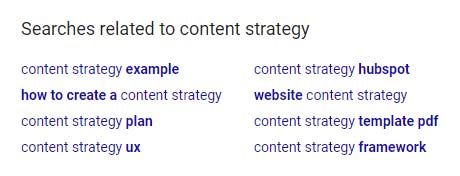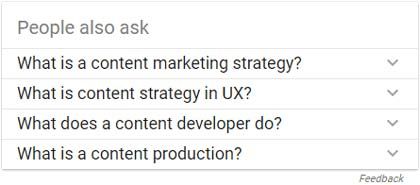So, you ask, what is a pillar page? What does it do? What is its purpose? And most importantly, why do you need it?
 Think of a pillar page as a brainstorm, or outline, or mind map. You have one central theme and a bunch of offshoots. You can also visualize a pillar page as a content umbrella—it has one overarching topic, with several more specific subtopics under it.
Think of a pillar page as a brainstorm, or outline, or mind map. You have one central theme and a bunch of offshoots. You can also visualize a pillar page as a content umbrella—it has one overarching topic, with several more specific subtopics under it.
A pillar page is an intensive SEO strategy as well. It serves multiple purposes, such as addressing a topic fully within one web page. This is very helpful for your target audience, who is looking for answers. It serves as an excellent way to infuse keywords and phrases into your website as well. It gives you a helpful structure to link to other website pages. Most succinctly, it is a way to address the changing needs of SEO.
You see, today’s consumer wants to chat. They want to ask questions or get real specific about what they’re looking for (it helps them wade through all that content noise out there)—and this makes queries and searches longer than ever before. You can call it the SIRI-effect…“Siri, what is a pillar page?” The effect is very real, especially with more people using voice searches and search questions as technology continues to advance.
In fact, according to Ahrefs, around 64% of searches are 4 words or longer, which makes pillar pages a dynamite SEO strategy; much more powerful than a blog post. But why is a pillar page such a great SEO strategy?
The quick answer is that search engines have gotten savvier. They are getting better at displaying content that a user wants.
Blogs are often written on a singular topic, but you aren’t necessarily able to put in all the SEO-rich keywords and phrases and subtopics within it. Pillar pages act as a topic cluster. You have a broad main topic, and since the pillar pages are longer, they allow you to bring in several more specific related topics and keywords into the page as well.
Bottom line—you need and want pillar pages to enhance your SEO strategy. You’re able to use the model to link URLs on your website more efficiently, help searchers find information more easily, and hopefully gets more pages on your site ranked by Google.
Here is where information could be written about the technicalities, algorithms, and thought process behind the topic cluster strategy—but you’ll need to be awake, so you can learn how to create pillar pages.











 Think of a pillar page as a brainstorm, or outline, or mind map. You have one central theme and a bunch of offshoots. You can also
Think of a pillar page as a brainstorm, or outline, or mind map. You have one central theme and a bunch of offshoots. You can also  HubSpot says it best: “Topic clusters help more pages rank to give searchers better answers.”
HubSpot says it best: “Topic clusters help more pages rank to give searchers better answers.” 
 Once you have your topic cluster ready to go, it’s time to determine some logistics for your pillar page. Like any piece of content, a pillar page will need to be individualized to your business. While there are some general rules of thumb, your audience will be more specific in their needs.
Once you have your topic cluster ready to go, it’s time to determine some logistics for your pillar page. Like any piece of content, a pillar page will need to be individualized to your business. While there are some general rules of thumb, your audience will be more specific in their needs. Long-tail keywords, keywords, and topic cluster are how you’ll intertwine SEO and your pillar page. The easiest way to begin listing your keywords and key phrases is by brainstorming.
Long-tail keywords, keywords, and topic cluster are how you’ll intertwine SEO and your pillar page. The easiest way to begin listing your keywords and key phrases is by brainstorming. There are more results, but you get the point. You can also use the “people also ask,” or as you’re typing it your query into the Google search box, see what other phrases start highlighting below.
There are more results, but you get the point. You can also use the “people also ask,” or as you’re typing it your query into the Google search box, see what other phrases start highlighting below.
